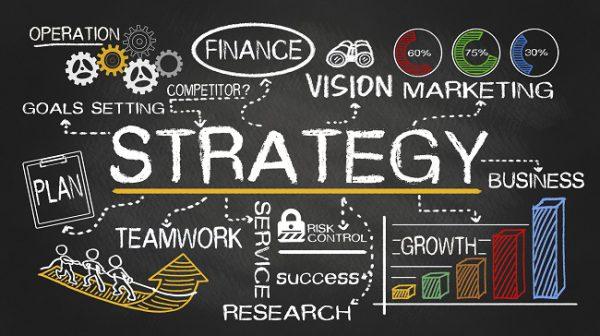In an era characterized by rapid technological advancement and shifting consumer preferences, businesses face unprecedented challenges and opportunities. To navigate this complex landscape, many entrepreneurs and established organizations alike are turning to the Lean Startup methodology—a framework that emphasizes iterative development, validated learning, and customer-centric innovation. By prioritizing flexibility and responsiveness, the Lean Startup approach allows companies to minimize waste, accelerate product development, and effectively meet the evolving demands of the market. In this article, we will explore the fundamental principles of Lean Startup methodology, its transformative impact on business operations, and practical strategies for implementing these concepts to achieve sustainable success. Whether you are a budding entrepreneur or a seasoned executive, understanding and embracing Lean principles can be a key driver of growth and innovation in today’s competitive environment.
Table of Contents
- Understanding the Core Principles of Lean Startup Methodology
- Implementing Validated Learning to Drive Informed Decision-Making
- Strategies for Effective Minimum Viable Product Development
- Fostering a Culture of Iteration and Adaptation for Long-Term Growth
- In Summary
Understanding the Core Principles of Lean Startup Methodology
At the heart of Lean Startup methodology lies the aim of maximizing value while minimizing waste. This is achieved through a cycle of Build-Measure-Learn, which provides a framework for entrepreneurs to develop their business ideas more effectively. By starting with a Minimum Viable Product (MVP), startups can quickly test assumptions and gather feedback from real users, enabling them to refine their offerings based on actual market needs rather than hypothetical scenarios. This iterative process not only accelerates learning but also conserves valuable resources by focusing efforts on what truly matters to customers.
Moreover, Lean Startup encourages a culture of validated learning and agile thinking, where continuous improvement is prioritized. Businesses utilize various techniques, such as customer interviews and A/B testing, to gather insights that guide future iterations. An emphasis on empirical validation helps to establish a clearer understanding of customer preferences, while real-time data analysis enables swift decision-making. By embracing these core principles, organizations can pivot or persevere based on solid evidence, ultimately leading to a more sustainable and successful business model.
Implementing Validated Learning to Drive Informed Decision-Making
To harness the power of validated learning, businesses must create a systematic approach to test their hypotheses about customer preferences and market conditions. This involves setting up minimum viable products (MVPs) that can be introduced to potential customers, allowing for immediate feedback. By implementing iterative cycles of build-measure-learn, organizations can quickly assess what resonates with their audience. Key elements of this process include:
- Creating a clear hypothesis
- Identifying metrics for success
- Collecting qualitative and quantitative data
- Analyzing results and pivoting based on findings
Furthermore, establishing a culture that encourages experimentation is vital for fostering innovation and agility within the organization. Leaders should promote an environment where teams feel empowered to test new ideas without the fear of failure. This can be illustrated in the following table:
| Aspect | Benefits |
|---|---|
| Testing Assumptions | Reduces risk and improves product-market fit |
| Customer Feedback | Informs product development and enhances user satisfaction |
| Iterative Learning | Enables rapid response to market changes |
Strategies for Effective Minimum Viable Product Development
To develop a successful Minimum Viable Product (MVP), it’s crucial to focus on the core functionality that addresses your target audience’s pain points. Start by identifying key customer needs through market research and user feedback. This will help you prioritize features that deliver maximum value. Utilize techniques such as user interviews and surveys to gather insights, ensuring that your MVP is not only functional but also resonates with your users. A well-defined user persona can guide your development team towards building a product that truly meets market demands.
Once you have a clear vision of your MVP, adopt an iterative development process. This involves creating rapid prototypes and conducting usability testing at each stage. Gather feedback from early adopters to refine your product further. Consider implementing a feedback loop where you can regularly assess user interactions and satisfaction. This approach allows you to pivot or adjust your offerings based on real-world data rather than assumptions. In addition, leverage tools like Agile methodology to enhance collaboration within your development team, fostering an environment of flexibility and innovation.
Fostering a Culture of Iteration and Adaptation for Long-Term Growth
To achieve sustainable long-term growth, businesses must cultivate an environment that prioritizes continuous improvement. This approach encourages teams to test ideas, analyze results, and make data-driven adjustments promptly. By embracing feedback loops, organizations can better align their products and services with customer expectations. Collaboration and open communication are key components of this process, allowing all team members to share insights and contribute to the iterative journey. Focus on these key practices to foster such a culture:
- Encourage team brainstorming sessions for idea generation.
- Implement regular reviews of project progress and outcomes.
- Utilize customer feedback to inform product adjustments.
- Create a safe space for experimentation without the fear of failure.
Embedding a mindset of iteration and adaptation also involves recognizing the dynamic nature of the market landscape. Businesses must be agile, ready to pivot based on emerging trends and consumer behavior. Cross-functional collaboration and rigorous analysis can facilitate timely decision-making, ensuring that the business remains competitive. To exemplify best practices in adapting to change, consider the following table:
| Adaptation Strategy | Description |
|---|---|
| Customer-Centric Design | Focus on user experience, refining product features based on feedback. |
| A/B Testing | Test different versions of products to determine the most effective option. |
| Agile Workflow | Implement sprints to develop products in short cycles, enabling rapid changes. |
In Summary
embracing the Lean Startup methodology can significantly propel your business toward sustained success. By prioritizing validated learning, rapid iteration, and customer feedback, companies can navigate the complexities of today’s dynamic market with agility and foresight. This approach not only minimizes waste but also enhances the ability to pivot when necessary, ensuring that product offerings remain relevant and aligned with customer needs.
As you implement these principles, consider fostering a culture of experimentation within your organization, where innovative ideas can thrive and evolve based on real-world insights. Remember, the path to success is not always linear; by iterating quickly and learning from both failures and successes, you position your business not just to survive, but to excel.
Now is the time to leverage the power of Lean Startup practices to unlock your organization’s full potential, drive growth, and achieve competitive advantage. Embrace this transformative methodology, and set your course toward a more agile and successful future.






